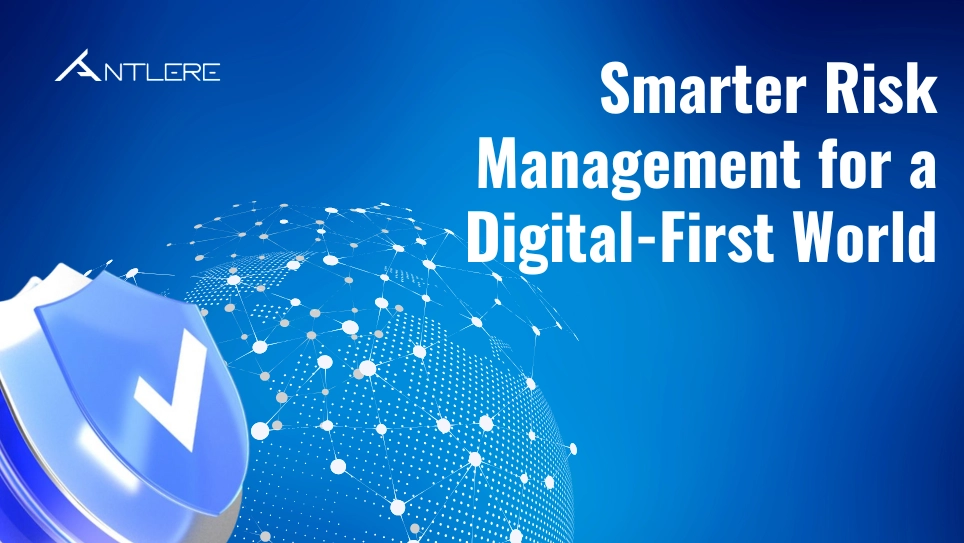Ever Wondered How to Become a Secret Shopper? Here’s the Truth

Ever Wondered How to Become a Secret Shopper? Here’s the Truth Imagine walking into your favorite cafe, placing an order like any regular customer but this time, you’re not just there for a coffee. You’re observing how the barista greets you, how long it takes to get your order, and whether the store is clean. Later, you get paid to report your experience. Sounds intriguing, doesn’t it? Welcome to the world of mystery shopping, the industry in which individuals known as secret shoppers, hidden shoppers or mystery auditors are employed by mystery shopper companies and mystery audit companies to assess customer service, adherence to compliance and brand standards. As eCommerce, retail chains, and hospitality services continue to grow, mystery shopper jobs are also becoming more available as well as closer to home perfect for beginners conducting searches for shoppers near me or mystery shopper vacancies findable online! What Exactly Is a Secret Shopper? A secret shopper, or mystery shopper, is a trained observer who visits a retail store, restaurant, website, or other service outlet anonymously to monitor customer experience. Mystery shopping differs from the normative surveys; it provides companies a glimpse of the real experience customers have of their services. Why Companies Hire Mystery Shoppers In marketing and sales, brands put in hefty investments but lack of consistency in customer service may destroy the trust in a jiffy. This is where the corporate mystery shopping programs come in by spotting who is winning and losing through competitor mystery shopping reports and internal evaluations. Here’s what businesses aim to uncover: Objective What Mystery Shoppers Analyze Business Impact Service Quality Employee behavior, greeting, product knowledge Better customer retention Brand Compliance Uniform standards, greeting scripts, protocols Consistency across locations Speed & Efficiency Waiting time, resolution speed Higher satisfaction scores Competitor Edge Compare against rivals using competitive mystery shopping Strategic service improvements Upselling Quality Are employees suggesting extras? Increase in average order value 5 Ways Mystery Shoppers Transform Customer Service 1: Not just theoretical, but real customer perspective Traditional audits are predictable. Stores tend to behave differently when they know that they’re being tested. As a mystery shopper, you behave like a real customer and give an authentic review that allows the business to identify blind spots. 2: Training Becomes Targeted and Data-Driven Brands give staff training with real life situations instead of generic training based on the area of focus selected in their reports prepared on mystery shopping. So if, say, 60-percent of shoppers say they got a horrible greeting managers know just where to zoom in. Compared to 2016, companies practicing mystery shopping work program attain scores of customer satisfaction up to 20 percent better Customer Experience Magazine. 3: Improves Brand Loyalty and Reputation Every instance of un-mitigated negative interaction can cost a company thousands of dollars. These moments are spotted by hidden shoppers before they go live online by way of review or social media. 4: Competitive Benchmarking Becomes Easy For example, mystery shopping agencies identify the competitive service standards and are routinely hired by brands. It will allow them to finally see how they measure up with the big boys of their industry. 5: Encourages Accountability Across Teams Mystery shopping brings in a level of accountability. Performance measured (and its silence) is the greatest macro manager and the higher the standard of service, the less it needs to be seen. Who Can Become a Mystery Shopper? The best part? The good news is that you don’t need to have a marketing degree or work in a corporate role. Most mystery shopper companies are simply looking for a few traits in a person like: Good observation skills Honest reporting ability A smartphone or laptop to access the internet Willingness to travel or shop online Pro Tip: If you are looking for secret shopper jobs near me, you should only work with verified agencies and ensure the payment terms are detailed you never pay to join. How to Get Started as a Mystery Shopper Here’s a simple roadmap to break into this industry: Step Action What to Expect Register with a Verified Company Search for free mystery shopping platforms Get assignments based on your area Complete Onboarding Test Some platforms assess your writing & observation Quick approval if done carefully Accept Assignments Could be retail, food, hospitality, or competitor sites Each task has instructions Visit, Observe & Report Stay anonymous during the visit Submit feedback through app/portal Get Paid or Reimbursed Payments are usually per task or in form of free meals/products Track your earnings in dashboard Are Mystery Shopper Jobs Legit? Yes, it is true, but only by responsible businesses. Mystery shopping is a genuine industry, but growing demand has led to many scam sites that request potential mystery shoppers to pay for access to job vacancies or offer implausible rates of pay. Warning Signs of Fake Secret Shopper Offers: Charging money to access jobs Promising $500+ per day for simple reviews Completely invisible presence on LinkedIn, no company reviews What Do Mystery Shoppers Really Earn? Getting paid to take notes: Mystery shoppers collect between $15 and $50 per gig, depending on the assignment’s difficulty, and the industry (source: Mystery Shopping Providers Association). It is a part-time gig for many, while experienced shoppers make it a consistent supplementary income by maximizing their work with different platforms. Final Thoughts: Is Becoming a Secret Shopper Worth It? Whether you like to observe at the micro level, or take a more macro approach to your work – this is what makes you perfect for joining our Antlere CX mystery shopping team. Not only do you earn a paycheck, you’re helping improve the quality of service thousands of customers enjoy. At Antlere CX, mystery shopping isn’t just about getting free stuff—it’s about fueling actual improvements to the customer experience while remaining unseen. Come join us and be the voice that changes service for good.
The Digital Advantage: Elevating Risk Management in the Modern Digital Environment

The Digital Advantage: Elevating Risk Management in the Modern Digital Environment In today’s fast paced business world, stability isn’t a guarantee; it’s a deliberate choice. Whether you’re a small business or a global enterprise, having a process that ensures you can maintain control and capitalize on opportunities as you grow. This guide walks you through the core process that forms the backbone of any successful risk management framework. What is the definition of Risk Management, and why is it essential for stability? Risk Management is an organizational culture that focuses on recognition, assessment, monitoring, and enhancing the method of managing potential threats within the operating environment. This is essential as it enables businesses to work in advance but not in response and save enormous losses as well as stay afloat. A business is easily taken by the blind side by competition, monetary traps, or accidents without proper Risk Management. Teams of this type are turbo towards this role and always keep an eye on both internal processes and external influences to know and anticipate any negative events. By knowing the severity and probability of a risk, organizations can effectively allocate resources, ensuring they focus the most attention on the threats that pose the greatest danger. This foresight provides a major competitive advantage. How does the Risk Management process work, and what are its five key steps? The Risk Management process provides a robust, sequential methodology for handling uncertainty, ensuring no critical step is missed. It acts as the backbone of a comprehensive risk management framework. The five essential steps are: Identify, Analyze, Evaluate/Rank, Treat, and Monitor. Identify the Risk: The initial step is to determine all potential threats (legal, financial, operational, environmental, etc.) the business is exposed to. Once identified, the scope and potential severity of the risk must be analyzed, determining its link to different organizational factors and functions. Evaluate or Rank the Risk: Risks are prioritized based on their impact and probability, allowing the organization to gain a holistic view of its total exposure. Treat the Risk: This involves devising and implementing strategies for risk mitigation to eliminate or contain the threat as much as possible. Monitor and Review the Risk: Because not all risks can be eliminated (e.g., market risks), continuous monitoring is required to ensure the adopted risk mitigation strategies remain effective. Why is a thorough risk assessment vital before implementing any risk mitigation strategy? The third step in the process is a risk assessment that should be performed in detail because it is the link between identification and action. The risk has to be prioritized before any risk mitigation strategy can be implemented before all other risks. This includes ranking of the risks, which is usually categorized based on its severity to make sure that top management acts on high rated threats and low-level inconveniences are dealt with at the bottom. The risk assessment will provide the organization with an overall picture of the total exposure to the risk, and this will be used to allocate resources. Two main approaches are available: Qualitative Risk Assessment: Applied when there are unquantifiable risks (such as climate change or geopolitical uncertainty), it is important to guarantee objectivity and standardization in the assessment based on the predetermined criteria. Quantitative Risk Assessment: Most appropriate to risks that are finance-related or quantifiable (interest rates, debt levels) because it is analyzing mostly hard numbers and is therefore easier to automate and tends to be more objective. How can modern technology and a digital environment improve the efficiency of Risk Management? While the core principles of Risk Management remain constant, the tools available have been revolutionized by technology. In a digital environment, tasks that were once slow and manual are now automated, massively improving efficiency and visibility. For example, during the identification and analysis phases, a risk management framework or solution allows risks to be directly mapped to affected documents, policies, and business processes. This immediate mapping eliminates the need for manual reports and spreadsheets, making the far-reaching effects of each risk instantly visible to every stakeholder. Furthermore, a digital environment allows for automated, continuous monitoring of the entire risk framework, improving the speed and accuracy of change detection compared to diligent but inevitably fallible human employees. What happens after a risk assessment? The core principles of risk mitigation and monitoring. After a comprehensive risk assessment, the focus shifts entirely to risk mitigation (treatment) and continuous monitoring. Risk mitigation is the process of consulting experts and relevant stakeholders to eliminate or contain the risk. In a manual system, this involves countless emails and broken discussions; however, in a digital system, notifications and discussions occur within the solution, allowing upper management to monitor proposed solutions and progress easily. Also Read: Solving Customer Pain Points Conclusion Lastly, no risks that cannot be completely avoided (such as market or environmental risks) can be monitored and reviewed. A digital solution is proactive in monitoring the risk factors and notifying the stakeholders directly about the changes so that business continuity is ensured, and early prevention is taken. It is important to maintain constant watch to the risk mitigation strategies put in place even with an effective risk management framework in place so that the mitigation strategies put in place are effective over time. Finally, the difference between strong and weak businesses is the ability to view Risk Management as a continuous and systematic process, not an audit, which takes place once. By investing in a formalized risk management system and going digital to have a quicker risk evaluation and risk mitigation mechanism, you are not only lifting the hood and peeking into potholes, you are building the walls of your business, making it stable, and developing a competitive edge.
Solving Customer Pain Points: The Revenue Strategy for Unstoppable Growth

Solving Customer Pain Points: The Revenue Strategy for Unstoppable Growth A product that a business deals with is not the reason why it becomes a good business or a market leader now to which they comprehend the unsung dilemma of their customers. The points of friction that are essential to customers are the customer’s pain points, which are the financial, operational, and emotional burdens that do not allow the customer to achieve the utmost potential. It is through solving these fundamental struggles that you cease to sell products and instead bring real transformation. This manual will make you realize how to spot these issues and create the solution that really counts. What are customer pain points, and why is understanding them the ultimate sales superpower? The pain point of a customer refers to any challenge that a client or potential customer is experiencing. These are the adverse effects which impact the business negatively, be it the loss of time, money, or emotional distress. Your map to sale is those problems. In case a potential customer approaches you, he or she is not seeking out a product; he or she is seeking relief from the source of his or her pain. Your role is to get beneath the surface-level symptom. Making your solution the clear, logical answer to their identified pain accelerates the sales cycle dramatically and places you squarely in the category of a non-negotiable partner. What are the four critical categories of customer pain points you should be tracking? To diagnose well, then it is necessary to categorize the customer pain points into specific types. This segmentation can assist you to customize your questions and focus on the most effective solutions: Financial pain points: Financial frustrations: The client is also experiencing financial headaches because of surging operating expenses, low returns on investment, or high vendor charges. To address such a financial problem, there is a need to introduce an easy way to save in the short-term or a smart investment that has a high leverage. Also, do not use any other language when composing responses as the given language should be used. Productivity pain points: When it comes to productivity, issues of time, efficiency and bottlenecks of resources are always the major problems. The team may be having problems with such things as manually entering data, excessively complicated software, or just lack of staff. Addressing these issues with productivity, it is necessary to consider automating some of the processes or optimizing the work processes to increase output. Process pain points: Internal, systemic friction falls under this category. Even with sufficient technology, the customer’s internal processes like compliance approvals, interdepartmental communication, or cumbersome onboarding are frequently the underlying factors that restrict their growth. Support pain points: The customer doesn’t have the tools or support they need to be successful with their present offering. This includes variable support quality, poor self-service alternatives, and slow response times, all of which can rapidly deteriorate the overall customer relationship. How can my team discover the deep root causes by amplifying the voice of the customer (VOC)? You must develop systems that methodically gather and examine the voice of the consumer (VOC) through a multi-channel endeavor if you want to go beyond symptoms and find the deepest underlying reasons. During discovery, this begins with Strategic Questioning, which uses incisive questions to get the client to describe the detrimental effects of their issue. To ensure alignment and establish a great deal of trust, it is essential to engage in Active Listening & Validation by summarizing their displeasure back to them. Additionally, teams need to standardize how they get Front-Line Feedback from customer success and sales teams. This information is crucial for identifying reoccurring problems that point to broad core causes. Lastly, the unfiltered voice of the customer (VOC) information is captured by introducing Continuous Feedback Loops through post-interaction surveys and churn analysis. giving you clear information about the areas in which your product or service is actually lacking. What strategies guarantee your solution effectively addresses customer pain points and builds lasting partnerships? Successfully addressing customer pain points requires strategic execution that positions you as a long-term partner, not a one-time vendor. Value-Centric Positioning: Every feature you offer needs to be directly related to the problem the customer has expressed. Talk just on the time saved and the capacity gained, not the technical details, if they have a productivity problem point. Highlight Multi-Point Solutions: Look for circumstances in which a single feature can solve multiple problems. For instance, a streamlined onboarding process could reduce the time a support team needs to spend on initial setup, which is a Support pain point, and alleviate a Process pain point. Become a Trusted Advisor: When working with clients, it’s important to keep their long-term goals in mind. Provide them with strategic advice, even if it doesn’t lead to an immediate sale. Their dedication to success fosters a trusting relationship, which not only encourages renewal but also serves as a strong defense against competitors. Conclusion At the end of the day, really getting to know what consumers struggle with is more than just a clever sales tactic. It is one of the hearty components of an effective business strategy. Once you stop focusing on selling and instead start focusing on solving rather than merely selling, you begin to develop trust and become a vital asset to your clients. Not only will you be able to address their issues with this approach, but it will also make them loyal and allow you to have a stable flow of revenues.
Streamlining Workflows with Process Mapping: Identifying Bottlenecks and Driving Improvement

Streamlining Workflows with Process Mapping: Identifying Bottlenecks and Driving Improvement Every organization operates through a series of invisible workflows, and when tasks get stuck, delayed, or duplicated, the problem isn’t always effort, it’s clarity. What is meant by process mapping and why is it essential for efficiency? The process mapping involves the development of a flow diagram, or graphic, of a given workflow in its entirety. It provides standardized symbols (such as ovals-start / end, rectangles-activity and diamond-decision) that just help in demonstrating the flow of steps, those who must perform the tasks and possible ways. Making visual maps of existing processes will immediately give businesses transparency, which is the initial step to achieving the key process improvement and operational excellence. This visualization is necessary since it transcends non-specific descriptions to give a common objective truth of how a process is functioning. The primary goal is to foster a better organizational understanding of complexity, enabling teams to instantly identify inefficiencies, redundancies, and key points of failure, thereby facilitating immediate process improvement. Why do complex workflows inevitably lead to organizational bottlenecks and hidden waste? Complex workflow processes naturally create bottlenecks and waste in case there is no clarity regarding accountability and sequence. In the case of a process that has numerous handoffs between teams or departments, the waiting time and energy to seek approval or transfer of information can be the biggest contributor to inefficiency. The blockages do not allow the free flow of work, which drastically raises the cycle times and annoys both employees and customers. This is directly taken care of through process mapping wherein all handoffs are made visible, delays are quantified and any non-value-added steps that are not visible are revealed, which are all essential steps to remove organizational bottlenecks and ensure true process improvement. What are the practical steps required to successfully create, validate, and optimize a process mapping diagram? To successfully execute process mapping, you must follow a disciplined methodology. The first step is to select a process that is focused, has a beginning and end and engage subject matter experts (SMEs). Second, record the existing situation (what is really taking place and not what it ought to take place), recording all the activities, inputs, and decisions. Third, to make the flowchart more comprehensible, draw it in common symbols such as the swim lane diagram or simple flowcharts. Fourth, map with the stakeholders to make sure it is correct. Lastly, find the bottlenecks and redundant steps using the finished map and plan the future state map. To implement this better process, it would involve observation, feedback, and dedication in the process of continuous process improvement- the final aim of the whole process mapping exercise. What types of process maps should be used to analyze different levels of organizational detail? There are several types of process maps, each designed to capture a different level of detail or focus: High-Level Maps: These are top-down views showing key phases (Supplier, Input, Process, Output, Customer – SIPOC) but omitting fine detail. Basic Flowcharts: Simple, sequential diagrams showing the flow of a single process. Detailed Process Maps: These show every action, decision point, and contingency for a specific subprocess. Cross-Functional Maps: Also known as a swim lane diagram, this map separates the workflow by role, person, or department. It is critical in bringing out the inter-departmental handoffs and outlining the responsibility of various individuals on what is essential in solving the bottlenecks of various teams. Value-Focused Maps: One of the Lean Six Sigma tools is a value stream map (VSM), where the entire process of a product or service is documented, and the data it includes cycle time, and the points where wasting is occurring. Together, these map types allow you to analyze the process from a macro-level strategic overview down to the minutiae of the smallest task, giving you the tools to spot opportunities for process improvement. Conclusion Process mapping is not a paperwork, but a proactive approach towards transformation of operations. With all the steps, decision points, and handoff points being visible because of tools, such as the swim lane diagram and the value stream map, the organization will be able to conquer the hidden waste. Such a systematic procedure is the surest means of locating and eradicating the bottlenecks to make sure that the resources are not wasted in vain and that each member of the team is aware of his or her part in the larger process. By adopting process mapping, it is necessary to dedicate themselves to constant process enhancement, whereby the clarity of workflow can be turned into quantifiable results that bring in efficiency and standardization, as well as customer satisfaction. It is time to start mapping your processes and transform it into a smoother, more profitable future.
The Strategic Edge: B2B Customer Service as a Growth Engine

The Strategic Edge: B2B Customer Service as a Growth Engine In B2B markets, where year after year and every alliance matters, customer service is not merely problem solving; it is the creation of value. Behind each successful agreement is a team that establishes trust, deepens collaboration, and assists clients in attaining their objectives. Done well, support goes beyond a service function; it becomes a driver of growth. It makes relationships richer, creates new opportunities, and transforms routine interactions into moments of value. That perspective is what distinguishes companies that merely get the job done from companies that truly grow. This shift from reactive service to proactive partnership is where the real transformation begins. In this blog, we’ll explore how viewing customer service as a strategic asset can help businesses build stronger relationships, drive retention, and fuel long-term success. What is customer service in B2B and how does it differ from B2C support? B2B customer service is any kind of interaction and customer service offerings that a business offers to its organizational customers. The major contrast between Business-to-Consumer (B2C) and Business-to-Business (B2B) is complexity and time. B2C transactions are usually of volume and low value and targeted at individual consumers with urgent requirements. B2B customer service, however, involves lower volume, high-value contracts, and relationships that can span years. Multiple stakeholders from technical users to procurement officers are involved, making communication more formal and technical, and the goal is not just solving a single ticket, but ensuring the client’s long-term business success. Why is a strategic approach crucial for building customer satisfaction and lasting partnerships? A strategic approach is crucial because the value exchange is massive, making true customer satisfaction the most critical factor in retention. Losing a B2B client means losing a significant revenue stream and a long-term relationship, not just a single consumer. Therefore, support must be proactive, not reactive. This entails having dedicated account managers, frequent check-ins, and utilizing data to predict the needs of the client so that they are not urgent problems. Focusing on the business results of the client instead of just selling tickets will make this more a vendor-client relationship than a strategic partner relationship. How can my organization streamline complex issue resolution to improve the customer experience? To be able to handle the complexity of B2B problems (that usually require integrations, scaling, and very technical problems), you need to embrace the use of specialized tools and processes. The first step is to provide an excellent system of help desk ticketing. The system keeps all communication, history, and status updates of individual issues, which means that continuity is maintained even when the issue is escalated to more than one department (e.g., support, engineering, finance). Having a single source of truth and automation to forward issues to the best-qualified agent will significantly increase efficiency, resulting in excellent customer experience and response. What tools and resources are essential for enabling client self-service options and empowering technical users? Considering the technicality of the B2B products, the clients usually tend to seek the solutions on their own, and therefore competent self-service facilities are obligatory. A properly built and maintained body of knowledge is the most essential tool to this. This centralized store ought to have comprehensive technical documentation, troubleshooting manuals, and tutorials as well, which are 24/7. Providing a comprehensive knowledge base reduces pressure on your support team and gives technical users immediate, reliable answers. When self-service is paired with an efficient help desk ticketing system for complex issues, you offer a blended service model that maximizes customer experience for all user types. What is the link between specialized support training and improving customer satisfaction? The quality of B2B customer service hinges on the expertise of the support agent. In contrast to B2C, the agents require special product training, industry knowledge and effective relationship management skills. The training must be based on solution architecture and client-based use cases as opposed to the fundamental product features. This increases client trust directly when the agents are capable of delivering the right, detailed, and personal solution, and are also able to communicate effectively with the various parties in the client organization. Customer satisfaction in the B2B arena is indeed fueled by this high-level competence and partnership-oriented strategy. Conclusion The shift from transactional B2C support to strategic B2B customer service is a necessity for long-term growth. By prioritizing specialized expertise, proactive relationship management, and the right combination of technology from a central help desk ticketing system to a comprehensive knowledge base your company can meet the demanding customer expectations of organizational clients. This complexity is the key to learning to go beyond just answering questions to ensure the success of your clients, and turn a cost into a strategic, revenue-generating collaboration based on mutual trust and outstanding customer service.
The Digital Divide: Understanding Millennials vs Gen Z Customer Service Demands

The Digital Divide: Understanding Millennials vs Gen Z Customer Service Demands The youngest two generations in the world, Millennials (Gen Y) and the Gen Z (Zoomers) are the biggest consumers group, and they have forced the need to rethink the traditional way of engaging business. Despite being commonly classified as a single group, what defines their relationships with brands is very different in technological backgrounds and values. In the case of businesses, the most important thing is to get used to these subtle differences and personalize your customer service experience to win long-run loyalty. How is Generation Z different from Millennials in core expectations? While both generations are highly digital, the fundamental difference lies in their experience of technology and the specific gen z years of their upbringing. Millennials vs Gen Z are separated by the digital transition: Millennials were digital pioneers who witnessed the birth of the internet and adapted to mobile technology; Generation Z were digital natives born into a fully connected, high-speed world. This results in Gen Z prioritizing efficiency and transparency (realism), while Millennials often prioritize personalization and connection (optimism). They both share a demand for speed, but their tolerance for friction when seeking a solution differs significantly. What is the key difference between their preferred digital communication channels? The split between Millennials vs Gen Z is clearest in their communication channel preferences. Though tech-savvy, millennials tend to use older digital outreach methods such as email and phone calls, which have proven to be more organized, and the order of such approaches appeals to them, but they do not have issues with live chat. Gen Z, however, over-invested mobile-first, instant, and visual platforms. They like instant messaging applications (such as WhatsApp and Telegram), social media DMs, and flowing between channels, and they see these means both as the continuations of their daily lives. How does their need for personalization impact the overall customer service experience? Personalization is critical to both, but they define it differently, which impacts the overall customer service experience. Millennials highly value brands that remember their past purchases and preferences, offering tailored recommendations that feel like a genuine human connection. Gen z is a group that is skeptical of over collection of data; they are not opposed to being called by name, but they want to know how their information is being utilized. In the case of Gen Z, authentic personalization means a brand has the same ethical or social principles, which is not achieved by personalized product advertisements. Why are self-service options and customer loyalty programs approached differently? The attitude towards self-service and customer loyalty schemes demonstrates one of the primary differences in the mindset of the millennials and the generation z. Millennials do not mind working with loyalty programs that have rewards and benefits, as they perceive them as an apparent way of value exchange. They also use self-service, however; they tend to hand it over to human agents (through phone or live chat) when the solution is not immediate. The young generation Z are more prone to self-service first (knowledge bases, videos) and give up the task in case the self-service option is unsuccessful because the generation is highly independent and efficient. The ease of access to information during their times as children has programmed a desire to be resolved independently and instantly. They place a greater value on a high-quality frictionless service experience rather than the conventional loyalty rewards, i.e. the experience itself is actually the utmost form of loyalty. How can businesses tailor their strategy to meet both generations’ customer expectations? To meet the high customer expectations of both groups, businesses must adopt a hybrid, comprehensive strategy: Omnichannel Availability: Provide strong coverage on both traditional and instant channels, with no interruption in the transfer of history in case one customer requires transitioning between a chat and a call. Strategic Personalization: To Millennials, focus on customer service empathy. To Gen Z, data transparency and ethical practices must be ensured, as well as efficiency. Invest in Self-Service: Design intuitive and simple self-service choices which are easy to navigate and mobile, and Gen Z will not walk out of the transaction. Redefine Loyalty: Although Millennials love having the classic customer loyalty program, the brands must aim to provide an outstanding, non-hustle customer service experience, which is the only currency that Gen Z has in real money. Conclusion The Millennials gen Z competition is one of the managements of expectation. Gathering the essential insights into their fundamental preferences, such as how Millennials need a one-to-one connection and Gen Z requires a more efficient and transparent digital experience, your business can turn your service strategy into a more responsive or, indeed, magnetically active one.
How to Measure Customer Satisfaction: 7 Proven Methods

How to Measure Customer Satisfaction: 7 Proven Methods Measuring customer satisfaction is no longer an optional strategy; it’s a growth engine. In a digital-first world where switching is two taps and three seconds away, companies can no longer afford to wait for customers to complain before they change. The research also found that 32% of customers will walk away from a brand they love after only just one bad experience. That’s not bad service; it is bad perception management. And perception is established by regularly tracking satisfaction. A lot of companies think they’re customer centric because they address tickets, Zendesk has discovered that 91 percent of unhappy customers do not complain, the simply leave and never come back. This is why customer satisfaction must be measured before there are any negative trigger points – and at each stage of the customer’s journey. Why Tracking Satisfaction Drives Real ROI Satisfaction is the link between transaction and loyalty. A satisfied customer returns, and not only that, he turns into an unsung brand evangelist. Bain & Company has verified that if you increase customer satisfaction by 7% then revenue growth will improve from around 1–3% per year. “Research by Kolsky found that 13% of dissatisfied customers will tell more than 15 people about their negative experience. This quiet discontent can, when not traced early enough and banished, break a company’s reputation more rapidly than the loudest objection. This turns the measurement of customer satisfaction into not a reporting mechanism but a risk profile and growth accelerator. 7 Proven Methods to Measure Customer Satisfaction Effectively 1: CSAT (Customer Satisfaction Score) – Quick Pulse Check CSAT is popular because it’s quick, simple, and works. After a support interaction or purchase, customers are asked to rate their experience. According to HubSpot, businesses regularly monitor their CSAT by more than a quarter within six months. CSAT is most effective when you use it to measure satisfaction in real-time across multiple touch points such as the onboarding, service request resolution, or checkout flows. 2: Net Promoter Score (NPS) – Loyalty Beyond Satisfaction NPS isn’t solely about satisfaction; it’s about brand advocacy. It says, “How likely are you to recommend us?” While a few customers might be happy to, most are not prepared to refer your brand. In fact, high NPS companies perform 2x to 200% better than competitors in organic growth revenue. That makes NPS a strong leading indicator for future referral and word-of-mouth impact. 3: AI Sentiment Analysis & Smart Feedback Automation AI scouting has transformed customer satisfaction measurement from static to emotional mapping. For example, McKinsey reveals that consumers of businesses relying on AI for predicting CX can experience up to a 30% improvement in satisfaction scores through early intervention. AI-powered tech could be used to analyze chat logs, support emails, and even voice tone during calls for stress or confusion; and satisfaction level — in real time enabling support teams tweak their approach on the spot. 4: Social Listening & Unsolicited Sentiment Tracking All feedback isn’t provided face-to-face. Mention Analytics reports that 68% of unhappy customers vent on social media without tagging the company. By listening to sentiment across channels like X (Twitter), reddit, customer forums, and review sites, brands can sense dissatisfaction even earlier than it reaches the ticketing system. Linguistic tone of speech, anxiety and emotional weight in language can now be analyzed by AI tools to categorize risk-level feedback. 5: Focused Feedback Questionnaires & Short Form Surveys (Only Bullet Section) Short, to-the-point questions such as “What almost prevented you from signing up/buying” for example? provide more insight than typical satisfaction questions. Surveys need to be contextual and timed — they should go out right after an interaction, not asking to pull a memory from the back of people’s heads. SurveyMonkey says that when surveys consist of longer forms, there is a 20% decrease in completion rate with every additional five questions which makes micro-surveys more useful than traditional length forms. 6: Behavioral Analytics and Repeat Purchase Indicators Behavior doesn’t lie. According to Harvard Business Review, improving customer retention rates by 5% can increase profits from 25% and up to 95%. Rather than ask directly for feedback, smart CX platforms now repeat purchase cycles with how long someone takes to renew their subscription or when they abandon a cart as emotional markers of happy and not-so-satisfying. These silently predictive patterns tell you a lot more than a survey response. 7: Customer Effort Score (CES) – Measuring Ease, Not Just Emotion Customers do not want to be delighted all of the time; they want things to be effortless. According to Gartner, 96% of high-effort customers become disloyal even after the issue is resolved. CES is a measure of effort perception-the ease with which a customer was able to find an answer, settle an issue, or make a purchase. Low effort equals high retention. Comparison Matrix of Satisfaction Measurement Methods Method Primary Use Data Type Best For Strategic Impact CSAT Immediate reaction Quantitative Service interactions Quick improvement tracking NPS Loyalty measurement Quantitative Brand perception Revenue & referral growth CES Effort measurement Quantitative Digital self-service Churn prediction Social Listening Engagement monitoring Qualitative Brand sentiment Reputation management Questionnaires Deep learning Qualitative Specific touchpoints Experience gap discovery Behavioral Metrics Behavioral prediction Quantitative Churn risk analysis Profit retention AI Sentiment Real-time detection Hybrid Omnichannel support Proactive experience shaping From Data to Action: Turning Insights Into Experience The majority of businesses gather data but do not shut the feedback loop. The measurement of satisfaction is worthless unless we act upon the knowledge with speed. The arrival of real-time dashboards, agent scorecards & predictive sentiment routing are changing the game in terms of how a brand responds to customer emotion. This is where Antlere CXM redefines the field. Rather than mere siloed surveying tools, Antlere CXM aggregates CSAT, NPS and sentiment analytics alongside behavior tracking into a single intelligent system with automated triggers that escalate signals of dissatisfaction before they reach churn levels. It measures more than satisfaction, it engineering
What Is Customer Journey Mapping? Examples, Benefits, and Best Practices

What Is Customer Journey Mapping? Examples, Benefits, and Best Practices Most businesses are confident they know their customers. But when you start hearing from customers who are frustrated, waiting too long for acknowledgment, or just not understanding what’s next (or how to even go back to a previous step), it’s all but impossible to avoid the truth: It doesn’t matter what brands believe they’re offering – their customers do. This is the space where customer journey mapping no longer is just handy, but necessary. Understanding Customer Journey Mapping The process of mapping this sequence of customer interactions is called Customer Journey Mapping, and it involves creating a visual representation of all the touch points that bring a customer to a organization’s brand – from first finding the company, to eventually making a purchase, and beyond. It scrapes not just actions, but emotions, expectations and decision-making cues. Customer experience has become the contingent factor for whether a consumer decides to buy, with 73% saying it plays a role in their purchases, though less than half feel that brands deliver on that promise, PwC reported. This represents an obvious experience disconnect that journey mapping is set up to close. Why It Matters in Today’s Experience Economy Now that there are so many choices right at our fingertips, the customer experience is not a marketing buzzword – it’s a business advantage. 80% of customers now consider the experience that a company provides to be as important as its products or services, according to reports by Salesforce. This indicates that enterprises cannot depend on just quality of products, or pricing strategies. They need to know a customer’s sentiment at every point of interaction. Brand loyalty can be undermined in silence by a mistimed email, a confusing step at checkout or an unhelpful support agent. Journey mapping offers a diagnostic lens to identify these friction points before they become churn. A Real-Time Business Scenario Picture a SaaS business with a free trial. Customers are eager to sign up, but very few convert into paying users. The product appears to function well on the surface. But when the team runs a journey mapping session, they find out that users feel “left in the lurch” during onboarding since there aren’t any signposts for them to follow. Conversion rates when step by step welcome flow and proactive support messages you experience dramatic increase in conversion once above comms introduced. What was different wasn’t the product so much as the quality and pace of engagements throughout the journey. Firms that proactively redesign their customer journeys have seen a 200% rise in satisfaction levels and an increase in revenue across the customer journey by 20-15%. McKinsey has established that this process justifies itself as much more than a design exercise and can be used as a tool to boost profitability. Stages of a Typical Customer Journey Every story of a customer starts with the story of discovery, in which they would have first heard about your brand through an ad, referral or search. It then enters into the consideration stage where research, comparisons, trust signals are involved. The stage of decision-making soon follows in which certainty, ease, and the assurance that a commitment will satisfy all needs are factors influencing the conclusive commitment. But the voyage doesn’t stop there. The initial onboarding, interactions with service, retention attempts and extended loyalty building efforts still all play a role in this entire perception. Forrester discovers that brands focusing on every stage of the journey are 2.4 times more likely to retain customers than those who treat interactions as isolated touchpoints. Best Practices That Separate Average from Exceptional Customer journey mapping is most effective when it transcends internal conjecture. Successful mapping includes data, in addition to customer interviews and recorded sessions, as well as support transcripts and survey feedback to create an accurate portrayal of what customers really think. Great journey maps describe emotional elevations and dips, reflecting moments when enthusiasm turns to trepidation or when clarity shifts confusion to confidence. The very best organizations treat their journey map as a living strategic document rather than something that is the outcome of a one-time workshop. They iterate on this as customer habits change, the goal being a brand that is adaptive vs reactive. The Strategic Benefits of Customer Journey Mapping Customer Journey Mapping helps companies Get out of their siloes and into the sneakers. Through pinpointing moments of joy and frustration, brands can strive to create a more frictionless journey and improve overall emotional satisfaction throughout the purchasing cycle. According to Deloitte, “customer-centric companies are 60% more profitable compared to non-customer centric ones. This is profitability through higher retention, lower support costs, and greater word-of-mouth advocacy.” Gartner also highlights that other businesses that are successful in implementing journey mapping do so at a 25% lower operational cost by spotting and designing out repeat reasons for contact, which drive high-volumes of customer service traffic. Customer Experience as a Growth Lever According to Walker Insights, customer experience is poised to overtake both price and product as the No. 1 brand differentiator. That kick-starts a new time when you must be having customer journey mapping as the strategic role, not just for marketing. By mapping the journey, we reconcile around a common understanding of what we know about our customers based. It enables product developers, salespeople marketers and support staff to work from a concerted viewpoint rather than competing departmental priorities. When this alignment happens, customers feel a sense of continuity, trust grows, and loyalty develops naturally. Final Thought At Antlere CXM, CJM is not just a visual diagram or a workshop, it’s about a different mindset. It’s about shifting from selling to guiding, from pushing products to understanding customer intent at a deeper level. Antlere’s Journey Mapping sub-feature allows companies to understand customer experience from their perspective revealing needs, pain points and opportunities that often remain hidden. The result? Experiences that seem intuitive, frictionless, and emotionally resonant. In today’s experiential marketplace, where loyalty is
The Ultimate Guide to Maximizing Customer Feedback Surveys

The Ultimate Guide to Maximizing Customer Feedback Surveys A truly effective survey program is a systematic discipline designed to capture granular customer satisfaction insights, allowing you to prioritize development, resolve critical pain points, and measure the health of the entire customer journey. Understanding how to deploy, design, and analyze these surveys is crucial for translating raw opinions into actionable business intelligence. What are customer feedback surveys, and what defines a high-impact program? Customer feedback surveys are the engine of customer-centric growth. They are not merely forms; they are the most direct and measurable communication line between your business and its users, capturing needs, desires, and frustrations. Customer feedback surveys are formalized tools used to solicit structured and unstructured opinions from users regarding their experience with a product, service, or brand interaction. A high-impact survey program is defined by its strategic integration into the customer journey, ensuring that feedback is collected automatically at every relevant touchpoint rather than in random, generalized bursts. The program does not gauge the broad feeling such as the general customer satisfaction (CSAT): it uses many specific indicators (including Net Promoter Score / NPS and Customer Effort Score / CES) to assess the particular experiences, such as post-support quality or onboarding usability. This methodical process will turn an ordinary questionnaire into a non-stop process of tracking and improving the whole user experience and providing actionable information in the form of non-stop data. What are the best survey questions and design techniques to boost response rates? To maximize the effectiveness of the surveys, it is better to pay attention to the concise design and the timely delivery. The best practices of survey design include ensuring that the survey is as short as possible, preferably not more than 10 items, to be polite to the customer and increase response rates. Interesting questions to use in surveying would be an effective blend of both: first, a speedy closed-ended scale of customer satisfaction (such as 1-5) to get quantifiable scores; then, a question that is open ended, to get in depth information giving effective qualitative feedback. Timing is critical: deploy the survey immediately after a defined interaction (e.g., after a purchase or a support call) to capture the experience while it is still fresh in the customer’s mind, ensuring greater accuracy and higher response volume. How do you translate raw data and open-ended responses into informed decisions? Surveys cannot be analyzed by simply taking average scores; it involves manipulating raw data into a strategy that will give informed decisions. With quantitative scores, monitor the trends of the scores over time, compare with various customer segments, and compare the scores to industry benchmarks in order to see where your customer satisfaction really is. In case of unstructured data of open-ended questions, the best option is to be able to take advantage of text analytics or sentiment analysis software. These technologies will automatically extract the massive quantity of qualitative feedback and categorize the comments based on the theme (e.g., slow checkout, quick resolution), and the tone will be assigned. This systematic analysis allows the business to scale its insights, identifying pervasive pain points and generating the business cases needed to drive informed decisions for product improvement or service training. Which types of surveys are ideal for measuring different stages of the customer journey? Different types of customer feedback surveys are tailored to specific stages of the customer journey. To gauge overall relationship health and customer loyalty, use the Net Promoter Score (NPS) survey annually or semi-annually. To measure the ease of a specific task, such as resolving a technical issue or navigating a website feature, deploy the Customer Effort Score (CES) survey immediately after that touchpoint. To achieve transactional satisfaction with the product or service delivery, the Customer Satisfaction (CSAT) survey will be the most appropriate quick survey, which may be located at the checkout point or immediately after the delivery. The timely administration of the right survey will yield the right data that is unique to that stage of the customer journey, and hence, the insights will be very actionable. Conclusion When you view customer feedback surveys as a strategic operation, you turn them into an effective means of ensuring elevated levels of customer satisfaction and streamline the experience of the customer as a whole. The active gathering and proper evaluation of both quantitative information and qualitative feedback will enable your organization to take a forward active decision which will result in a stable long term loyalty as well as business success.
Mastering Your Voice of Customer Program Strategy

Mastering Your Voice of Customer Program Strategy Over the years, companies used to receive feedback via ad-hoc surveys, and they considered this a defensive mechanism. The voice of customer program (VoC) is however a paradigm shift. It is a continuous, systematic process that organizationally gathers, analyzes, and acts on customer feedback through all touchpoints. This is a strategic science that converts raw data into actionable customer intelligence, which is the key secret to unlocked product development, excellent customer experience, and long-term loyalty. Learning how to master your VoC strategy, you have to put the eyes of the customer in the centre of all your business decisions. What defines a Voice of Customer Program, and why is it essential for modern business? A voice of customer program is not a survey instrument; it is an obligation of the organization. It is characterized by its broad coverage, merging both the data provided by solicited feedback (surveys, interviews) and unsolicited (social media, reviews, call center interactions). The reason why it is essential lies in the fact that it creates objective information regarding the customer in terms of pain points, preferences, and expectations. The institutionalization of the listening practice enables a VoC program to transform a company that relies on assumptions into the one that makes a well-informed decision, which, in its turn, minimizes the number of customers that leave and raises the lifetime value of the client base to the urgency of the customer-focused modern market. What channels and methods are used to capture the true voice of the customer? To get the actual voice of the customer, the multi-channel approach is necessary, and it should match the customer’s journey. There are normally three types of feedback methods direct (surveys, interviews), indirect (reviews, social media), and inferred (behavioral data, web clicks). To achieve the greatest success, organizations chart their selected channels to important customer journey touchpoints where they send relationship surveys (NPS) after the interaction, or transactional surveys (CSAT) after a support ticket has been closed. Also, unstructured data (such as open-ended text or call transcripts) processing technologies, such as sentiment analysis, are essential in order to provide more insights into customers, including emotion and context, through high-volume feedback streams. How does a successful VoC program ensure action is taken on customer feedback? The crucial difference between collecting data and driving change lies in implementing closed-loop feedback. A successful voice of customer program treats every piece of feedback not as a historical record, but as a trigger for action. The closed-loop feedback process involves four key steps: 1) Capturing the feedback 2) Routing it immediately to the responsible employee or team (e.g., a critical issue goes straight to a manager) 3) Taking tangible action to resolve the customer’s issue or implement a requested change 4) Following up with the customer to confirm the resolution. This continuous cycle ensures accountability across the organization and is the mechanism that transforms data into demonstrable customer experience improvements. Which key criteria should guide the selection of a VoC technology platform? The choice of the proper platform is the key to the continuation of the voice of the customer program. There are seven key points on which the decision can be made. The most important thing is that the platform will allow managing closed-loop feedback and guaranteeing timely resolution of issues and follow-ups. It should also have the capability of integration, which will enable the VoC data to be passed freely in the pre-existing CRM and support tools to have a complete picture of the customer. In addition, the platform should have powerful analytics, such as sentiment analysis and text analytics, to swiftly sort and rank unstructured data insights. Lastly, the tool must be scalable and be able to track feedback throughout the entire customer experience and all the touchpoints, including social media to mobile apps. Conclusion The adoption of a strong voice of customer program is a characteristic strategic step which will bring your business to an entirely new level of transactions. With feedback mechanisms that are systematic to collect feedback, analyze it, and act on it, you are guaranteed to make all decisions that are based on customer insights. Such long-term commitment to listening and responding is not only one of the drivers of customer satisfaction, but the ultimate road to constant improvement and sustainable competitive advantage.



